The Ultimate Guide to Creating Effective Anki Cards for Dental Students
As a dental student, you're constantly bombarded with an overwhelming amount of information. From intricate anatomical structures to complex procedures, the sheer volume of knowledge can be daunting. But fear not!
Anki, a powerful spaced repetition software, can be your secret weapon in conquering dental school. In this guide, we'll explore the best ways to create Anki cards that will supercharge your learning and help you ace your exams. And with the right anki setup, including an anki remote, you'll be unstoppable.
Why Anki is a Game-Changer for Dental Students
Before we dive into the nitty-gritty of creating effective Anki cards, let's briefly touch on why Anki is such a powerful tool for dental students:
- Spaced repetition: Anki uses an algorithm to show you cards at optimal intervals, ensuring long-term retention.
- Active recall: The question-and-answer format forces you to actively retrieve information, strengthening neural connections.
- Customization: You can tailor your cards to your specific curriculum and learning style.
- Portability: With mobile apps and an anki remote, you can study anywhere, anytime.
Now, let's get into the meat of creating killer Anki cards for dental studies.
The Anatomy of an Effective Dental Anki Card
1. Keep It Simple and Focused
When creating Anki cards for dental topics, resist the urge to cram everything you know about a subject into a single card. Instead, break down complex topics into smaller, more digestible pieces. For example:
- Bad: "Describe the entire process of tooth development."
- Good: "What is the first stage of tooth development called?"
By keeping your cards focused, you'll make them easier to review and remember.
2. Use the Cloze Deletion Feature
Cloze deletions are perfect for dental anatomy and terminology. They allow you to create fill-in-the-blank style cards that are quick to review. For instance:
"The {{c1::enamel}} is the hardest substance in the human body and covers the {{c2::crown}} of the tooth."
This single card creates two separate review items, testing your knowledge of both enamel and crown.
3. Incorporate Visual Elements
Dentistry is a highly visual field. Make the most of Anki's image support by including:
- Dental X-rays
- Histological slides
- Anatomical diagrams
- Clinical photographs
Pro tip: Use an anki controller to quickly navigate through image-heavy decks without taking your eyes off the screen.
4. Utilize the Extra Field for Context
While keeping your cards simple is crucial, sometimes a bit of extra context can help solidify your understanding. Use the "Extra" field in Anki to provide additional information, mnemonics, or clinical relevance. For example:
Front: "What is the function of ameloblasts?" Back: "Ameloblasts are responsible for enamel formation." Extra: "Remember: Ameloblasts make AMELanin for enAMEL. They're only active during tooth development and are lost once the tooth erupts."
5. Create Reverse Cards for Key Concepts
For critical information, create reverse cards to test your knowledge from multiple angles. This is particularly useful for dental terminology and classifications. For instance:
Card 1: Front: "What is dental caries?" Back: "A disease process that causes demineralization of tooth structure."
Card 2: Front: "Which dental condition is defined as 'a disease process that causes demineralization of tooth structure'?" Back: "Dental caries"
6. Use Mnemonics and Memory Hooks
Dental school involves memorizing countless terms, classifications, and procedures. Spice up your Anki cards with mnemonics to make the information stick. For example:
Front: "What's the mnemonic for the branches of the mandibular nerve?" Back: "MILE: Masseteric, Inferior alveolar, Lingual, and buccal nErvE"
7. Integrate Clinical Scenarios
As you progress in your studies, incorporate more clinical scenarios into your cards. This will help bridge the gap between theoretical knowledge and practical application. For example:
Front: "A patient presents with sharp pain when biting down on their upper right first molar. What's the most likely diagnosis?" Back: "Cracked tooth syndrome" Extra: "Remember to look for 'rebound pain' when the patient releases the bite."
Optimizing Your Anki Study Sessions
Creating great cards is only half the battle. To truly excel, you need to optimize your study sessions. Here's where an anki clicker or anki remote can be a game-changer:
- Increase efficiency: An anki remote allows you to review cards rapidly without constantly reaching for your keyboard or mouse.
- Improve focus: By eliminating the need to look away from your cards, you can maintain better concentration during long study sessions.
- Study on-the-go: Pair your anki controller with a tablet or smartphone for the ultimate mobile study setup.
Remember, consistency is key. Aim to review your cards daily, even if it's just for 15-20 minutes. With a streamlined anki setup and well-crafted cards, you'll be amazed at how much dental knowledge you can retain.
Conclusion: Your Path to Dental Excellence
Creating effective Anki cards is an art and a science. By following these guidelines and continuously refining your technique, you'll build a powerful personal knowledge base that will serve you well throughout dental school and beyond.
Don't forget to experiment with different card formats and find what works best for you. And if you're serious about maximizing your Anki efficiency, consider investing in an anki remote to take your study sessions to the next level.
Happy studying, future dentists! With the right tools and techniques, you're well on your way to mastering the complex world of dentistry.
Product
Copyright © 2025 Study Tools LLC (Anki Remote). All rights reserve. Anki Remote is independent and not endorsed, sponsored, or affiliated with Ankitects Pty Ltd or Ankiweb. Any mention of Anki is solely for descriptive purposes, and no endorsement or sponsorship by Ankitects Pty Ltd is implied. Anki is a registered trademark of Ankitects Pty Ltd.
